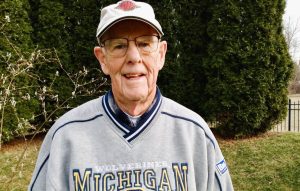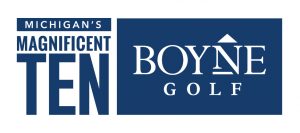EAST LANSING – Many people in the golf course industry have long believed that properly managed golf courses enhance communities much like city parks or open green spaces.
A research project, the most comprehensive ever conducted on the environmental impact of golf courses on communities, funded by the United States Golf Association (USGA), performed by researchers at the University of Minnesota and Michigan State University is proving them correct.
The research, which included all Detroit metro-area golf courses, demonstrates courses provide the greatest amount of cooling among land uses, are more supportive of pollinators than urban residential or industrial areas and retain more nutrients from stormwater runoff than suburban or urban residential areas.
In general, the study demonstrates that golf courses enhance their neighboring communities, said Dr. Brian Horgan, a professor and the chairperson from Michigan State University’s Department of Plant, Soil, and Microbial Sciences, who headed the research in Detroit.
The Community Values of Golf Courses project has researched over 300 golf courses in the Twin Cities metropolitan area of Minnesota and the metro-Detroit comparing them with five other land uses: natural areas, city parks, suburban residential zones, urban residential zones and industrial parks.
The research is part of the global Natural Capital Project, composed of groups that have developed a systematic approach that places a value on nature and the benefits it provides to people and their communities. Formed in 2006, key collaborators include the Nature Conservancy, World Wildlife Fund, Stanford University, and the University of Minnesota’s Institute on the Environment, among other leading sustainability organizations.
The models and methods used for the initial set of Midwest courses quantified their “natural capital” by applying globally accepted principles that quantify the value of golf courses in terms that land planners commonly employ when determining land use.
“Examining the environmental and societal impact of changing a golf course’s land footprint to a different land cover or management type can help us understand the implications of that decision on the ecosystem services provided by green spaces to the surrounding community,” Horgan said.
The project is intended to help golf courses – especially those owned or managed by municipalities, cities and counties – make decisions that account for the outdoor recreation they provide, the biodiversity and the habitats they offer for wildlife and food pollinators, and the environmental benefits they deliver, including stormwater runoff mitigation, urban cooling and carbon sequestration.
“This research marks a significant moment for public golf as courses around the country face the continued threat of redevelopment for residential and commercial use,” said Mike Davis, CEO of the USGA earlier this year in a USGA press release.
“It is critical to the health of our communities, particularly in urban areas, that golf courses are viewed through the same lens as a city park or other similar green space, and value is placed on their environmental benefits as well as their balance sheets.”
The USGA has invested nearly $400,000 into the Community Values of Golf Courses project over a three-year period as part of its annual investment in the Turfgrass and Environmental Research Program (TERP), the largest private research effort in the history of golf. Since the program’s inception, the USGA has invested more than $41 million to advance golf by using science and innovation as the foundation to impact thousands of courses and millions of golfers.
Launched in 2017, this research began partly in response to changes in global population demographics. Dr. Horgan noted that an estimated 70 percent of the world’s population is expected to move into city centers by 2050.
“We know that green space is going to be challenged in these cities, and golf courses represent a large percentage of urban green space,” said Horgan, chairman of MSU’s Department of Plant, Soil and Microbial Sciences. “Irrespective of whether an individual plays golf, we wondered if they receive a value by having that green space available to the surrounding area.”
With some 14,200 golf courses in the United States totaling nearly 2.3 million acres of green space, researchers recognized the importance of measuring the ecosystem value courses provide. While nongolfers may not immediately recognize the benefits provided by courses in their communities, the researchers agree that public perception could change if those courses were viewed as green space, just like parks.
“A person driving by a golf course might think of many other ways that land could be used, but what they don’t understand is there are tangible and intangible ecosystem services they are receiving from that course,” said Horgan. “I would even argue that a community that’s subsidizing a public golf facility might be spending the best money they can spend, because they are preserving green space as well as access to the services the community receives from it.”
The Natural Capital Project’s complete project will also include the study of ecosystem services in Atlanta, Dallas, Phoenix, Philadelphia and the San Francisco Bay Area. Courses in these cities will provide greater understanding of the values of natural services in different geographic climates, while providing city and urban planners with more data-driven reasons to incorporate or conserve green space.
-The USGA and Golf Journal reports provided the information in this article and appeared previously on Golf Journal and USGA websites.















































